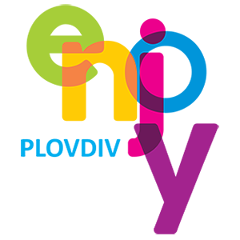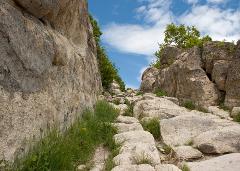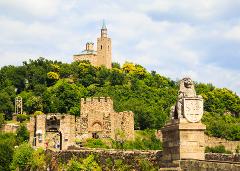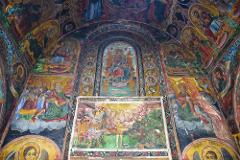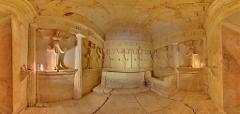Gift Card for The Rich History and Culture of Medieval Bulgaria - 10%
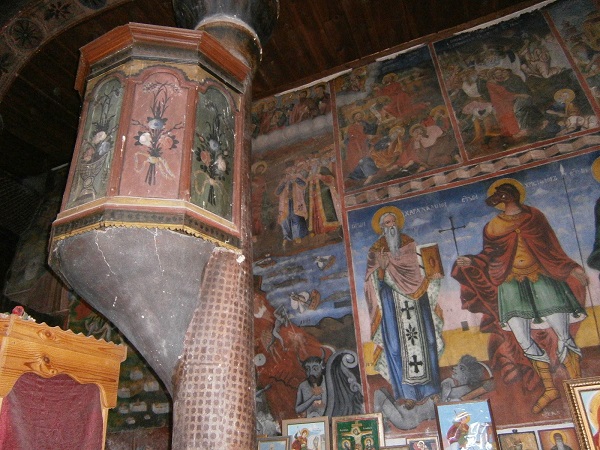
- Location: Plovdiv
- Product code: P6ZZS6
About
This round trip takes you off the beaten path and away from the bustling cities to some of the most interesting Medieval landmarks in Bulgaria. On it, you’ll get to see the amazing Rock-Hewn Churches of Ivanovo and the Kazanlak Tomb – two UNESCO World Heritage Sites bearing stunning wall murals from drastically different time eras. You will go on to explore the only active rock monastery in Bulgaria and architectural and ethnographic reserves such as Arbanassi and Plovdiv’s Old Town. In-between, you’ll go sightseeing in major cities such as Sofia, Veliko Tarnovo and Plovdiv – home to historic monuments and cultural hubs.
Highlights
• See the spectacular UNESCO-listed Rock-Hewn Churches of Ivanovo, home to unique 14th century wall murals
• Visit the Kazanlak Tomb – a UNESCO World Heritage site known for its ancient Thracian ceiling frescoes
• Climb up to the only active rock monastery in Bulgaria – the Basarbovo Monastery
• Delve into the beautiful forests of Stara Planina Mountain, home to the Troyan Monastery and its miracle-working icon
• See the fascinating architecture and museums of Arbanassi
• Discover what made Plovdiv the 2019 European Capital of Culture
• Go on a tour of Sofia’s top attractions
• Enjoy gorgeous views from every hotel along the route
Description
Day 1
Pick up from Sofia, from where we’ll be heading towards Rousse. We can explore its chief attractions or simply relax.
Overnight at the stunningly beautiful and peaceful Seven Generations Hotel, with a tasting of high class local wines.
Day 2
After breakfast, we’ll go on a trip to the Ivanovo Rock-Hewn Churches.
Ivanovo is home to one of Bulgaria’s UNESCO World Heritage Sites – the fascinating Ivanovo Rock-hewn Churches. Carved deep into the side of the mountain, these churches house a series of unique 14th century frescos that deviate from the standard Byzantine church art found in Eastern Orthodoxy and share a few common features with Hellenistic art. The beauty of the surrounding landscapes, the climb up to the churches, the amazing architectural features and the way the Medieval monastery complex blends into the natural rocks come together in an unforgettable masterpiece of nature and history.
Just a few kilometres away is another rock-hewn monastery – the only one in Bulgaria that is still active.
The Basarbovo Monastery was built sometime during the Second Bulgarian Empire – between the 12th and 14th centuries. Its rooms, carved high into the side of a mountain rock, are in use to this day. There is a natural cave that acts as the monastery’s ossuary. Inside are kept the remains of an important monk, and a small museum exhibition.
From there, we’ll drive to Veliko Tarnovo – the medieval capital of Bulgaria.
Veliko Tarnovo’s top attraction is the medieval stronghold of Tsarevets. Built high atop a hill, it towers over the city and offers a beautiful view of the area from up high. It served as the Second Bulgarian Empire’s primary fortress from 1185 to 1393, comprising the royal and patriarchal palaces.
The Archeological Museum documents the millennia-long history of Veliko Tarnovo, from pre-historic to modern times. It showcases tools and clay crafts that date back to 5800 BC, golden treasures from the Chalcolithic era, and a unique Neolite era stone vessel bearing inscriptions that predates the invention of writing. It highlights the city’s time as an ancient Roman settlement, ancient Greek and Roman artifacts from the 2nd century AD, and medieval exponents from its time as the capital of the Second Bulgarian Empire.
The Holy Forty Martyrs Church is a medieval church, built during the reign of Tsar Ivan Asen II in the 1230’s. It has been restored, its collapsed parts rebuilt, and it is now open to the public. The church houses two marble columns upon which are inscribed accounts of two great historical achievements of the Bulgarian Khan Omurtag of the First Bulgarian Empire and Tsar Ivan Asen II of the Second Bulgarian Empire.
The Museum of the Bulgarian Revival and Constituent Assembly is housed in the building of the old Turkish konak (police office in the Ottoman Empire). It was built in 1872 and is a stunning example of Revival Period architecture. It has two floors housing different exhibitions. In this museum, visitors can trace the development of Christian art from the end of the 14th century to the end of the 19th century in a collection of works by master wood-carvers. The Revival Period exhibition is dedicated to Veliko Tarnovo in the 18th and 19th centuries, showcasing examples of the traditional crafts practiced in this city at the time, including gold-smithing, tannery, pottery and more. This museum also houses reproductions of important historical events related to the Liberation efforts of the region of Tarnovo during the 19th century.
The Samovodska Charshia is the old market in Veliko Tarnovo. In the early 19th century, when the town was rapidly developing emerged a market centre with numerous workshops, bakeries and cafes. Today, the workshops on this street preserve the spirit and the original atmosphere of the Revival Period, and the artisans still follow authentic techniques in their craft making.
Then we’ll set off towards Arbanassi, where we’ll see stunning examples of 16th and 17th century Revival Period architecture. We’ll visit some of the gorgeous house-museums and see the beautifully decorated interiors and learn about the history of the region.
Overnight at a hotel in Arbanassi.
Day 3
After breakfast, we leave for the next stop of our tour – the Troyan Monastery.
The Troyan Monastery is the third largest monastery in Bulgaria. It is located in a picturesque part of Stara Planina Mountain, surrounded by beautiful natural scenery on all sides. Its gorgeous architecture and frescoes draw people from all over the country. Its exact origins are unknown – the founders and the date it was founded are a topic of discussion among historians, but it thought that it was built around the 16th century.
The monastery is home to a miracle-making icon of the Virgin Mary, depicted with a third arm. It is said to be able to heal ail ailments suffered by believers and non-believers alike. The story goes that when a passing monk was on his way to taking the icon north, he stayed at the monastery for a few days. People from far and wide came down to see the miracle-working icon and pay their respects. When it was time for the monk to leave, his horse tripped and fell before he even reached the gate. The monk took it as a sign, and postponed his trip by a few more days. However, when he tried to leave again, the horse tripped again in the same spot. The monk decided that the icon does not want to leave the Troyan Monastery, and left it under its care.
Next we head for the town of Kazanlak – a place where the Valley of the Roses and the Valley of the Thracian Kings overlap.
What is known as the “Valley of the Thracian Kings” is where the rulers of the ancient Thracian tribes were buried with their horses, items and treasures. The Kazanlak Tomb (circa 4th-3rd century BC) is one of the most significant monuments of Thracian culture in the country, included in UNESCO’s list of global cultural inheritance. This tomb is known for the remarkable wall paintings covering the walls of the corridor and the dome ceiling.
After that we’ll visit some of Kazanlak’s other major attractions, including the Rose Museum, which will introduce us to the rich history of Bulgaria’s rose oil production industry. It contains over 15,000 exhibits pertaining to rose oil.
Our next stop is Starosel and its ancient Thracian tomb. It is the oldest Thracian complex with a mausoleum found in Bulgaria and dates back to the end of 5th century BC. The temple is built in a sacred place, in a region with a large number of ancient rock temples and mounds. The larger tomb is called the Chetinyova mound, and it gives you the chance to see what remains of the sites the Thracians of this region used for winemaking, ritual sacrifice, and the burial site itself.
After we’re done with our tour, we’ll enjoy a wine tasting at the luxurious Starosel Winery, built in the style of a Thracian Tomb.
Overnight in Starosel Hotel & Winery.
Day 4
On the third day, we’ll head for the city of Plovdiv.
We’ll start our sightseeing with a visit to the Old Town – a historical and architectural reserve known for its buildings in the style of the Bulgarian Revival Period, ancient Roman and Thracian ruins, various monuments and landmarks, all perfectly illustrating the complicated history that has shaped this city into the Plovdiv of today. We’ll visit its most famous and noteworthy landmarks, including the Balabanov and Hindliyan Houses, the Plovdiv Regional Ethnographic Museum, and, of course, the crown jewel of this city – the Ancient Roman Theatre.
After the Old Town, we’ll go down to the Main Shopping Street to see the ancient Roman Stadium and its uncovered northern part, which is open to visitors.
Next is Kapana (i.e. “the Trap”) – Plovdiv’s famed art corner, made up of a labyrinth of intertwining streets lined with modern art stores, stylish little cafes, building walls colorfully painted by talented street artists and constantly changing pieces of modern art scattered around every corner.
Overnight in Plovdiv.
Day 5
In the morning after breakfast, we’ll then take the Trakia motorway to Sofia – the capital city of Bulgaria.
In the afternoon, we’ll go on a sightseeing tour of Sofia’s top attractions. Its busy streets, the beautiful Baroque architecture in the Center and the park possess a lively charm that leaves you eager to explore, but the monuments and landmarks it is most famous for deserve our full attention.
The Saint Alexander Nevsky Cathedral is one of the largest Orthodox Christian cathedrals in the world and the second largest on the Balkan peninsula. Its impressive size and intricate design mark it as one of the most stunning architectural marvels in Bulgaria and Sofia’s most recognizable landmark.
The Saint Sophia Basilica is a red-brick church is stands atop the foundations of a sacred temple built in Roman times. The city of Sofia is named after this basilica.
The Church of St. George, built by the Romans is in the 4th century, is an early Christian red brick rotunda that is considered the oldest building in Sofia.
The Church of St. Nicholas the Miracle-Worker is a beautiful golden-domed church designed in the Russian Revival Style. Visually, it is unlike any other Orthodox church in Bulgaria. It is believed to be able to grant wishes.
The Ivan Vazov National Theatre is an example of neoclassical architecture is so spectacular that you will want to carry the memory home with you.
Overnight in Sofia.
Day 6
Departure from Sofia after breakfast.
Price per person
• For a minimum of 6 people: 320 €
• For a minimum of 4 people: 450 €
• For a minimum of 2 people: 600 €
The price includes
• The services of a professional English-speaking tour guide
• Accommodation in classy hotels along the way in double rooms
• Half board (all breakfasts and dinners included)
• Wine degustations at the Seven Generations Winery and the Starosel Winery
The price does not include
• Lunch
• Single room: +15 €
